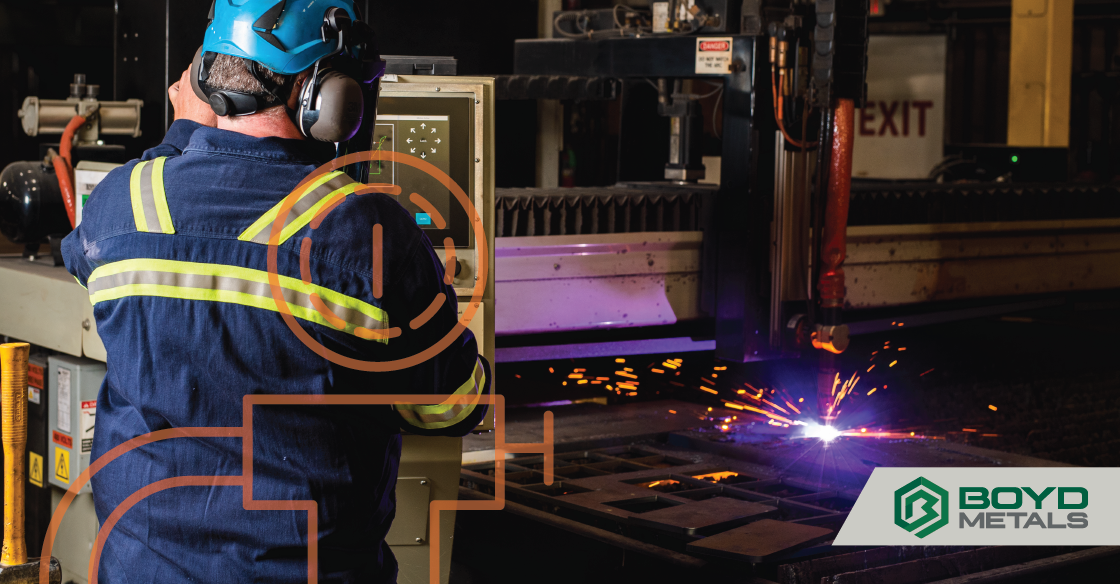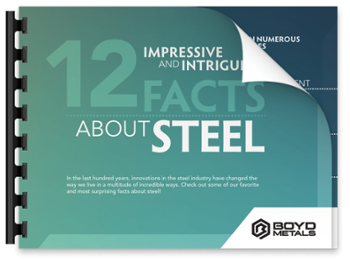If you’re a metal worker, then you're no stranger to the process of oxy-fuel cutting. Used in both heavy industry and light industrial and repair operations, oxy-fuel cutting is a process that has been around for decades.
However, in recent decades, oxy-acetylene welding has become all but obsolete. Modern arc welders have replaced them with more consistency and faster welds. But that doesn’t mean that it doesn’t still have its place in today’s industry. Oxy-fuel plate cutting is still widely used in multiple industries.
But what is it oxygen-fuel cutting? And how exactly does it work?
What is Oxy-Fuel?
While oxy-fuel systems are simple to understand you have to first know what an oxy-fuel is. In 1903, French engineers Edmond Fouché and Charles Picard developed the process of oxygen-acetylene welding. When using pure oxygen (instead of air), one can boost the temperature of a flame significantly. When paired with a fuel like acetylene, that flame burns around 6,332 ºF.
Localized melting, with the use of a torch, allows for the material to be welded or cut in a room environment. Just like that, the two French engineers created a tool that would change the industrial landscape forever.
But oxygen-fuel processes can use a range of different gases as fuel. While acetylene is certainly the most common, other gases that may be used are propylene, liquified petroleum gas, propane, natural gas, and hydrogen - each containing their own properties that make them beneficial.
In oxy-fuel systems, oxygen is not the fuel but what chemically combines with the fuel to produce heat. This is called oxidation. With oxy-fuel cutting, oxidation of the metal being cut produces all of the heat required to "burn" straight through the workpiece.
Oxy-Fuel Cutting
Oxy-fuel plate cutting is a dependable method for cutting mild steel. You must preheat the mild steel with a cutting torch prior to cutting the material. The steel needs to reach an ignition temperature of approximately 1760 °F. Once the steel reaches the proper temperature, the heated portion receives oxygen via a nozzle. The oxygen reacts with the iron and transforms the heated metal into liquid steel.
The resulting waste matter's melting point is not as high as the melting point occurring in steel. So, the stream of oxygen has the capacity to eliminate the liquid waste matter without disrupting the solid steel. An ongoing process called the exothermic reaction cuts the steel while the cutting torch continues to do its job.
The steel is constantly hot during the cutting process. Most metals are not able to withstand this method because of their high alloy content. Accordingly, the oxy-fuel cutting process is ideal for cutting low carbon steel.
Why Use Oxy-Fuel?
An oxy-fuel cutting torch is the tool to use if you want to cut through a thick wall. Plasma torches are designed for cutting through thinner walls that are no thicker than 3 inches. While the cuts may not be as clean, oxy-acetylene will carve through material up to 24 inches thick. That’s 1,200% thicker material than plasma cutters can handle.
Oxy-fuel is also one of the most portable methods of cutting. With just two gas tanks and a torch, you can cut anywhere. No electricity required.
Lastly, oxygen-fuel cutting is less expensive than other cutting alternatives. Though if you are using oxy-fuel and you’re wanting clean, precise cuts, it could cost you over time paying for gases and the cost of clean-up afterward.
And there it is - everything you need to know about oxy-fuel cutting - from the what an oxy-fuel is, to how it works, and why you should use it.
If it turns out that this wasn't everything you wanted to know and more, visit our contact page, or give one of our locations a call, and we'd love to talk more about how your business can take advantage of oxy-fuel cutting.
Steel is an amazing, multifaceted material that people use every day, often without even considering its importance. For your entertainment and enlightenment, we have put together a free guide: 12 Impressive and Intriguing Facts About Stainless Steel!
We hope you find this information
as riveting as we do!




